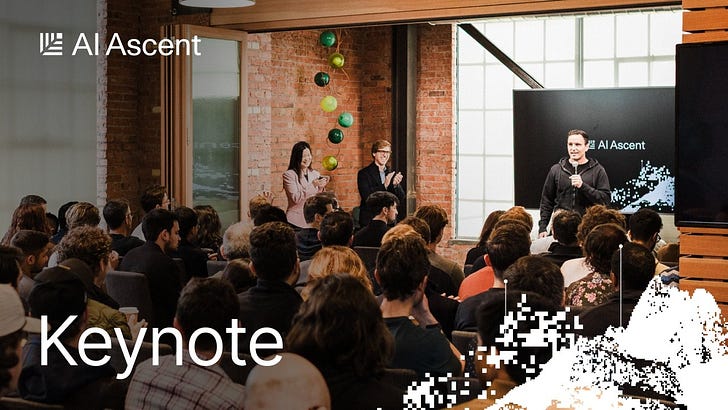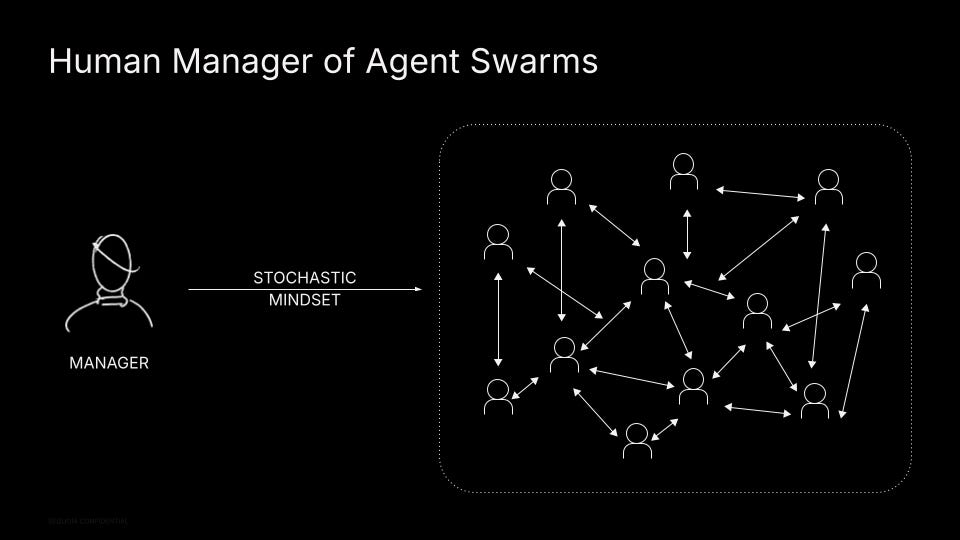AI's Trillion-Dollar Opportunity: Sequoia AI Ascent 2025 Keynote
Sequoia partners outline the growing market opportunity and the rising competition in the application layer on the way to the agent economy.
Post methodology: Dust custom assistant @AIAscentEssay using Claude 3.7 with system prompt: Please take the supplied transcript text and write a substack-style post about the key themes in the talk at AI Ascent 2025. Style notes: After the initial mention of a person, use their first name for all subsequent mentions; Do not use a first person POV in the posts. Light editing and reformatting for the Substack editor.At AI Ascent 2025, Sequoia partners Pat Grady, Sonya Huang, and Konstantine Buhler shared their insights on the rapidly evolving AI landscape, offering a compelling framework for understanding where we are and where we're headed. Their keynote painted a picture of unprecedented opportunity, accelerating innovation, and the emergence of an entirely new economic paradigm.
The Market Opportunity: Bigger Than Cloud
Pat opened with a stark reminder of AI's massive market potential. Unlike the cloud transition, which began when the global software market was relatively small, AI is attacking both software and services markets simultaneously—representing a profit pool at least an order of magnitude larger than previous technological transitions.
"Both of these profit pools are under attack," Pat explained, describing how AI products are evolving from tools into copilots and ultimately autopilots, shifting from software budgets into labor budgets. The implication is clear: the endpoint for AI services 10-20 years from now "has a chance to be absolutely massive."
Why AI Is Accelerating Faster Than Previous Transitions
One of the most compelling insights was Pat's explanation of why AI adoption is happening at unprecedented speed. Unlike previous technological transitions, AI benefits from three critical distribution elements already in place:
Awareness: "November 30th, 2022, ChatGPT comes out. The entire world is paying attention to AI."
Distribution channels: 1.2-1.8 billion people on platforms like Reddit and Twitter (now X)
Connectivity: 5.6 billion people connected to the internet—"effectively every household and every business in the world"
The result? "When the starting gun went off, there were no barriers to adoption."
Where Value Will Accrue: The Application Layer
Despite competition from increasingly capable foundation models, the Sequoia team remains convinced that the greatest value will be created at the application layer. As Sonya admitted with a smile, "I remember thinking like, okay, Pat. Sure. Good luck with that. But having seen how the last few years have played out, I think you were right, Pat."
For startups building in this competitive landscape, Pat recommended focusing on vertical-specific or function-specific applications, dealing with complex problems that might require human-in-the-loop solutions, and working "from the customer back" rather than from the technology out.
The Rise of AI Engagement
Sonya highlighted a dramatic shift in user engagement with AI tools. Where once daily-to-monthly active user ratios for AI applications lagged far behind traditional apps, ChatGPT is now approaching Reddit-level engagement. "This is extremely good news," Sonya noted. "It means that more and more of us are getting value out of AI."
She pointed to several breakthrough areas, including:
Advertising: "stunningly accurate and beautiful ad copy"
Education: "visualizing new concepts with the snap of a finger"
Healthcare: "diagnosing patients better with an app like Open Evidence"
The Agent Economy: The Next Big Wave
Konstantine outlined what he sees as the next major evolution in AI: the emergence of an "agent economy" where AI agents not only communicate information but transfer resources, make transactions, and develop their own economic relationships.
"The agents work with the people, and the people work with the agents in this agent economy," Konstantine explained, while identifying three key technical challenges that must be solved:
Persistent identity: Agents maintaining consistent personalities and memories
Seamless communication protocols: The equivalent of TCP/IP for agent interactions
Security: Building trust in an environment where you can't meet face-to-face
The Stochastic Mindset
Perhaps most profound was Konstantine's discussion of the "stochastic mindset" required to thrive in this new era—moving from deterministic computing to probabilistic outcomes.
"A lot of us fell in love with computer science because it was so deterministic," he noted. "Now we're entering an era of computing that's going to be stochastic."
This shift will require everyone to embrace "way more leverage with significantly less certainty," fundamentally changing how we work, how companies operate, and eventually, how the entire economy functions.
The Urgency of Now
Pat closed his section with a call to action that perfectly captures the current moment: "Nature hates a vacuum. There is a tremendous sucking sound in the market right now for AI... you are in a run like heck business right now. Now is the time to go at maximum velocity."
This sense of urgency, balanced with thoughtful strategic insights, defined the Sequoia partners' keynote. Their message was clear: The AI revolution is happening now, the market opportunity is enormous, and the winners will be those who move quickly while building durable advantages at the application layer.
Have a different take on the future of AI or think we missed an important trend? Let us know in the comments.










Agent Economy. Truly inspiring! After that, AI will replace our labor and serve people’s needs. Many may lose their jobs, but at the same time, a large number of new demands will emerge, and the economy will become even more prosperous.